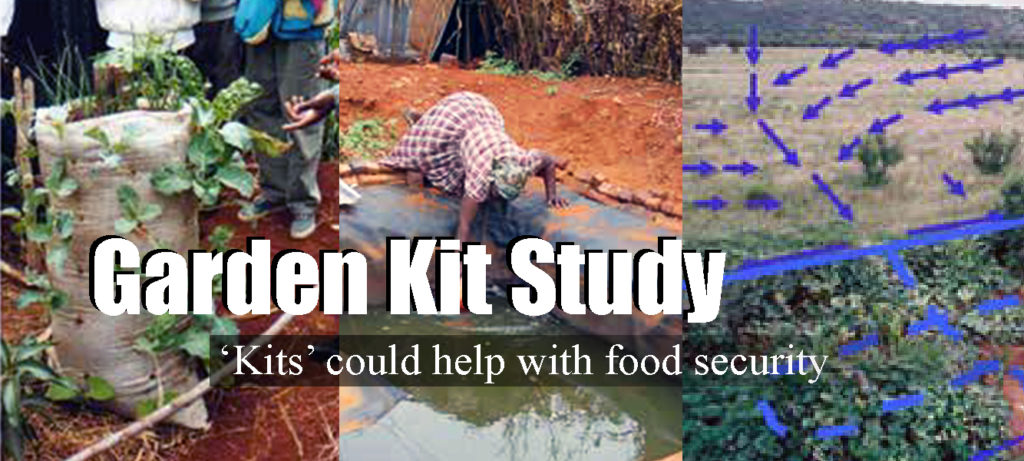Water is scarce in Africa. In Ethiopia, women get water from a shallow well like the picture on the right by throwing a pail with a rope, and then manually lifting the pail. The water is used for multiple purposes one of which is irrigation. The task is very taxing to the woman’s body. A team of engineers from Bahir Dar University and North Carolina A&T State University, funded by the Feed the Future Innovation Lab for Small Scale Irrigation (ILSSI), designed a simple ‘Pail Lifter’ shown on the left picture. Water is lifted from a pail using a ‘Pail Lifter’ and then stored in a tank. ‘Pail Lifter’ eases the drudgery of lifting water just with a string, and minimizes well contamination because the rope is wrapped on the lifter and is not lying on the ground or touched by human hands. From the tank, water is distributed to the field using a drip irrigation system. Although the ‘Pail Lifter’ was mainly designed to fetch water for irrigation; eventually women used it to fetch water for livestock and home use. Because of provision of irrigation, two villages that barely produces vegetables have women enabled to produced onions, garlic and tomatoes in 0.01 ha fields beside their homes. For garlic and tomato, average harvests were 28 kg and 97 kg, respectively per 0.01 ha, with about 34% of the tomato consumed by the household and 66% were sold. This is a welcome source of income to women who just began to grow vegetables. Conservation agriculture production was compared with conventional practice. Conservation agriculture involved no-tillage, continuous organic residue mulch, and diverse species rotation. For garlic, average yield was 17 kg for conservation agriculture and 11 kg for conventional; for tomatoes it was 58 kg for conservation agriculture and 38 kg for conventional. Water use in conservation agriculture system was 16% less than the conventional system. The team is optimistic that as the women become more familiar with conservation agriculture, water use will be even lower than the current 16% water savings.
An encouraging success story is from a young and newly married woman commercial vegetable home gardener for privacy we will call Eme. Emetestified that with the help of her husband together they produced 240 kg of tomato from a 0.01 ha land near her home. Sixty-seven percent (160 kg) of tomatoes were harvested from conservation agriculture plots and 33% (80 kg) were harvested from conventionally tilled plots. She sold about 210 kg of tomato and the rest, 30 kg, have been consumed by their household and provided to relatives and friends for free, a common culture in Ethiopia. While tomato was being harvested, she prepared foods from tomato once every three days stating that tomato helped her to diversify their daily food improving her family’s nutrition. She made about 1300 Birr ($65) from selling tomato. As newly married couple, they were able to pay house utilities and able to save money in a bank. She had learned that the drip system saved her time and drudgery of irrigating vegetables than doing it manually. This gave her more time to care for her six months old baby. She also learned that mulching saves water and increases productivity. So, they are planning to apply mulch for their other vegetables and coffee plants.
Pail lifter, drip irrigation and conservation agriculture studies are just a year old, ILSSI is optimistic as more training is provided and as protocols are improved because of experience gained by women, the number of vegetables grown per year will increase from at least once to four times a year, increasing income, empowering women and diversifying diets of Ethiopian households.
Article by: Manuel Reyes
Shallow well. Photo by Manuel Reyes
Pail Lifter. Photo by Amalake Ameru Jembere



